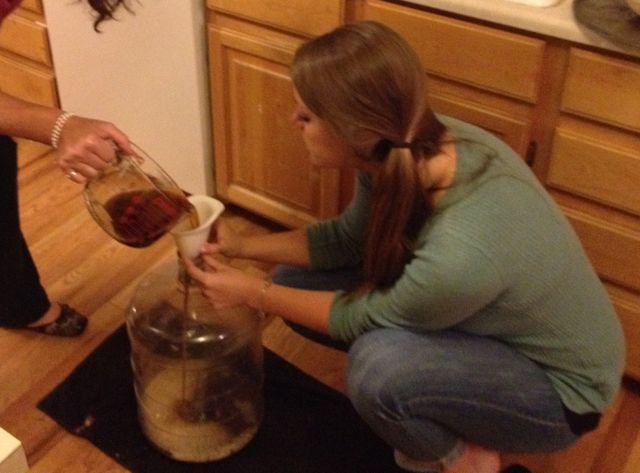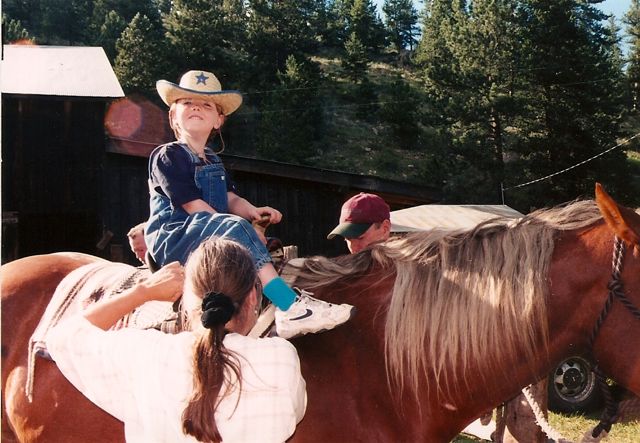“I hear and I forget, I see and I remember, I do and I understand.”
Let me tell you what everyone should do to bring home how true this is. Everyone should brew a batch of beer in his or her kitchen.
Throughout the past few months, since we really committed to making this brewery a reality, I’ve been paying a bit closer attention when TimCo brews. And over the past 3 months, he’s stopped brewing altogether. Starting a biz tends to grind some other activities to a halt, even when the biz is related to one of your favorite things. Then Linsey came on board and in her casual conversation she lets drop about 3,000 things an hour that I’ve never heard of in brewing. She talks serious chemistry here and knows minutiae about yeasts, for crying out loud. So to try to get a handle on this foreign language I began to read about the process a bit. All that got me was more confused -- I see why there’s a need for an official fermentation sciences course of study (and bravo, CSU, for developing it). It’s a broad and complex field that encompasses a whole lotta’ science, agriculture, mechanics, and artistry. Overwhelmed, I harkened back to the key learning in that phrase above and figured I’d do and understand – I needed to brew my own batch of beer.
When I announced my experimental brewing intention to Tatum, she wanted to participate. AGAIN – one more way in which beer brings people together and adds balance to our life. She took time out of a zany college and work schedule, I stopped looking at spreadsheets and paying innumerable bills for Horse & Dragon, and I got to spend some time with our daughter. We scheduled a date, I poked around for inspiration and ingredients (thank you Zach at High Hops Brewery and the nice guys at Hops And Berries), and we set to it.
1. If you’re making a 5 gallon recipe of beer, you really need a gigantic pot.
TatumCo: “I thought of giving you one for Christmas, but then I realized you’re getting one that’s approximately 100 times the size of this one.”
2. Chinook hops smell amazing. Even in pellet form.
3. Brewing is a good thing to do on a cold day in arid Colorado. You'll get a little mini-sauna going.
5. There’s terminology. You might, if you’re like Tatum and me, have to Google. For e.g.:
Sparge.
Pitch.
Crash.
Flame out.
Boil. [Do you mean steeping for flavor? Or a gentle boil, to stir a tad and get it all toasty hot? Or rolling-all-over-the-place (RAOTP) boil, hot as bejeezus to kill stuff. And if the latter, does that take 90 minutes? What kinda’ organisms are LIVING in our water?!]
All this was just for this one recipe. I’m sure there’s some crossover in the next recipe, but I’m equally sure we’ll encounter some other new vocab.
6. No one wants to have his or her surgery done on our kitchen counters.
This learning lesson will not surprise anyone who knows me and didn’t shock me, so I’m not sure we can call it a lesson gleaned from homebrewing. But just in case you were thinking of scheduling that over here…
On a related note, (7) there’s a lot of sterilizing going on in brewing. There are beer enemies. Bacteria and suchlike. Even oxygen is a hostile attacker – except when it’s beer’s friend. (Apparently wort should aerate. Who knew?) There’s a magic chemical, which I sincerely hope does not cause growth of a second nose, that’s marketed as Star San. By the end of our brew day we were pretty much spraying that stuff on everything involved in the process. After reading the label and Googling the ingredients, I realize I should stop reading labels. The bottle recommends we wear gloves and protective clothing and be careful not to inhale the mist (which is all over our kitchen at this point). Hazardous to humans and domestic animals. And then this: “Do not rinse.” [After applying it to everything THE DELICIOUS PRODUCT YOU ARE GOING TO DRINK TOUCHES OR RUNS THROUGH, you’re supposed to leave this “dangerous to humans” stuff right there on it and let your treasured wort run over it.] I’m going to have to assume that there’s some magical chemical reaction during the fermenting process that neutralizes the Star San chemicals and makes it less hazardous to humans who drink good fresh beer or I won’t be able to sleep nights.
8. The giant pot produces incredible aromas.
Tatum: “Mmmmmm. I wish that you could take a picture of smell.”
10. Wort is a fabulous insulator. We were all done boiling (vigorously, BTW) and needed to drop the temp to around 70 so as not to kill the yeast we were about to pitch in there. We rigged up a little homemade heat exchanger in our fridge:
When I got up this a.m. everything looked happy and tidy in the carboy, so it must have gone okay.
Having listened to Tim and Linsey talk Horse & Dragon tanks and having chatted with at least one supplier, the time it takes to drop the temp to a yeast-friendly level on a more commercial system seems to be a big selling point. I am sincerely hoping this is because, as a business needing to sell your product, you just don’t want to wait eons for those 15 barrels to cool down. If it’s because there’s a pivotal effect on the flavor of the beer that you achieve through quick cooling of the wort to fermentation temp, our better-than-pie pumpkin ale might not live up to the descriptor.
The upshot of all this is, I think we should brainstorm on some other applications for hot wort. It definitely should be in those mini-barrels around St. Bernards’ necks. I think it has potential in ski boot liners, SCUBA wetsuits, and waterbeds. Where else?
11. Wort is possibly the stickiest substance known to humankind. Heat this stuff up and Super Glue has got nothing on it. I know this because, as mentioned previously, we concluded our pot was too small. And we know THIS because:
12. Adding even just a small baggie of fresh hops grown on a close-as-family friend’s front door vine as part of your aroma hops is the best secret ingredient ever. Don’t tell me there’s not love in that Thanksgiving beer.
































 RSS Feed
RSS Feed